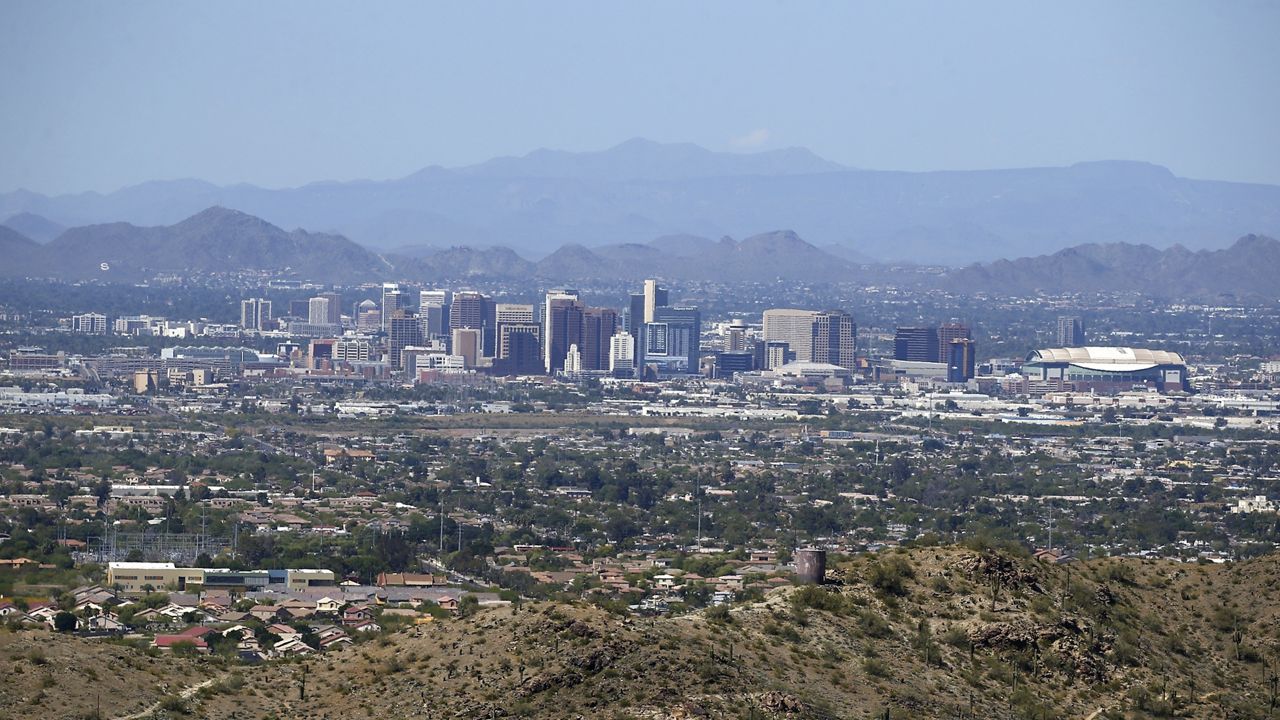Everyone has a favorite type of weather: hot, cold, rainy and snowy are among some favorites. But do you live in the right city?
Keep in mind, there are lots of places that are hotter, colder, wetter or snowier than the ones listed below, but they are not actual cities.
Hottest places to live
There are different ways to measure the hottest place to live. One way is to measure extreme heat, and places that see the hottest temperatures. Another way is to look at the warmest climates where you rarely have to worry about frigid cold.
If you love extreme heat, Phoenix, Ariz. is where you want to be. Phoenix has more days with high temperatures of 100 degrees or higher than any major city in the U.S.
The downtown Phoenix skyline on Tuesday, April 7, 2020. (AP Photo/Ross D. Franklin)
Since 2000, Phoenix averages almost 120 days per year with highs of at least 100 degrees, tallying up 133 of those days in 2023 (only behind 1989 and 2020). Phoenix has only failed to reach 100 days above 100 degrees once since 2000, reaching 99 in 2016.
But after all, it’s a dry heat, right?
What about the warmest cities? This distinction lends itself to more humid and tropical climates where temperatures don’t get as cold, especially during the winters. Honolulu, Hawaii and Miami, Fla. top Phoenix for average annual temperature.

Waikiki Beach, Honolulu, Hawaii sunrise after a rain storm. (iStock)
Somewhat surprisingly, neither Honolulu nor Miami has ever even hit 100 degrees. Although oppressive humidity can easily put the heat index well into the triple digits, especially in South Florida.
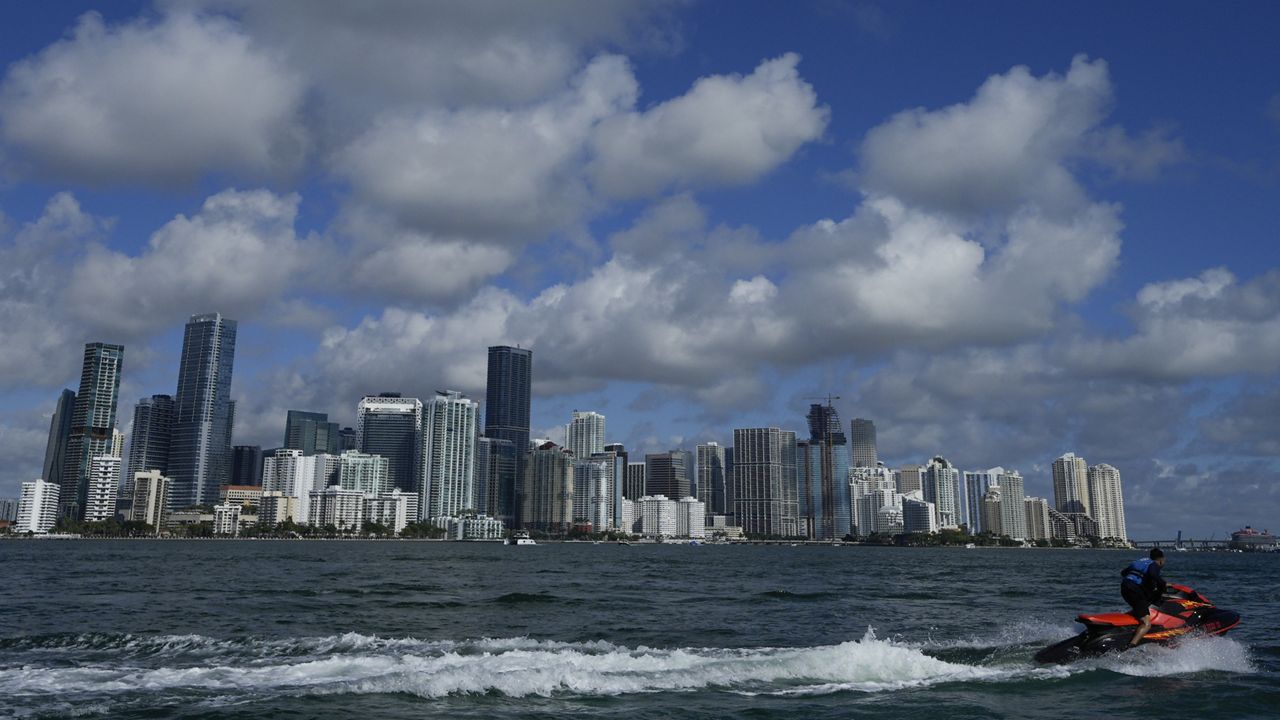
Skyline of Miami, Fla. (AP Photo)
The tropical climates bring much warmer winters than what you would expect in the desert, so if you hate the cold and also enjoy warm and humid climates, Hawaii and South Florida are the spots for you.
Coldest places to live
If you’re a fan of the cold, heading north is the way to go. If you’re looking to escape far away, Fairbanks, Alaska, is an option.
_(cropped))
Aerial view of Fairbanks, Alaska. (Photo by Quintin Soloviev, CC BY-SA 4.0)
Fairbanks is Alaska’s northernmost major city, and has recorded temperatures as low as 66 degrees below zero before. The average low temperature is below zero for five months of the year. June and July offer the warmest days of the year, with average highs in the lower 70s.
If you’re looking to stay a bit closer, don’t worry, there are plenty of wintry options in the Lower 48. Duluth, Minn. edges out some close competitors with the lowest average annual temperature in the continental U.S.
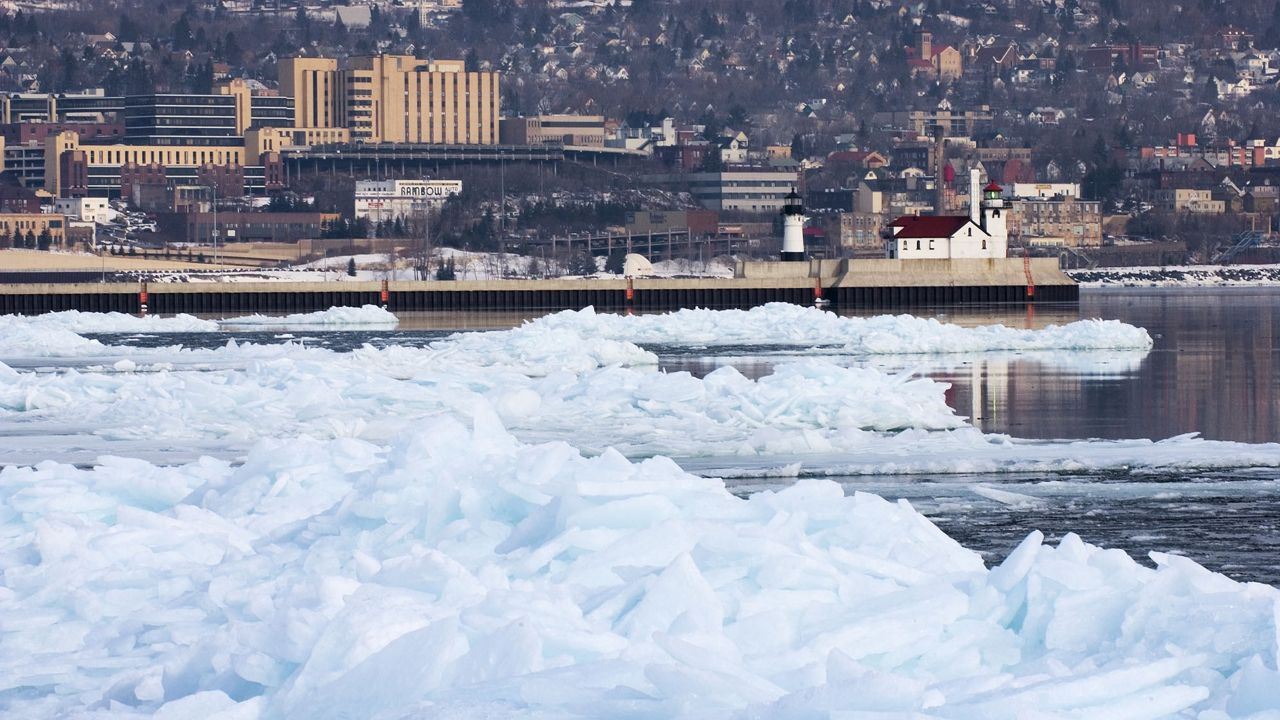
Ice plates pile up on the Lake Superior shoreline at Duluth, Minn., in this view from Park Point Wednesday, March 3, 2004. (AP Photo/Jack Rendulich)
The port city on Lake Superior experiences long winters and cool summers thanks to a steady lake-breeze during the day. You can expect overnight low temperatures to fall near or below freezing for about half of the year, with an average annual temperature just below 40 degrees.
North Dakota and South Dakota also have a handful of options with cities that have average low temperatures near zero degrees during the winter.
Wettest places to live
Nothing beats a lazy, rainy day inside. But you have to ask yourself before moving to a rainy place if you want to live somewhere with heavy downpours and impressive annual rainfall totals, or somewhere with lighter, but more frequent rainy days.
If you’re into heavy rainfall, you can look to the Southeast. Miami leads the country for annual rainfall, with an average of 67.4 inches per year.

A resident walks on a flooded street at the Driftwood Acres Mobile Home Park, in the shadow of the Guitar Hotel at Seminole Hard Rock, in the aftermath of Tropical Storm Eta, Tuesday, Nov. 10, 2020, in Davie, Fla. (AP Photo/Lynne Sladky)
Behind Miami are a slew of cities across the Gulf Coast and the Southeast, including New Orleans, La., Mobile and Birmingham, Ala., Houston, Texas and Memphis, Tenn.
All of those southern cities have wet rainy seasons during the summer influenced by deep tropical moisture with heat and humidity, along with potential tropical threats that could bring excessive rainfall totals in a brief span.
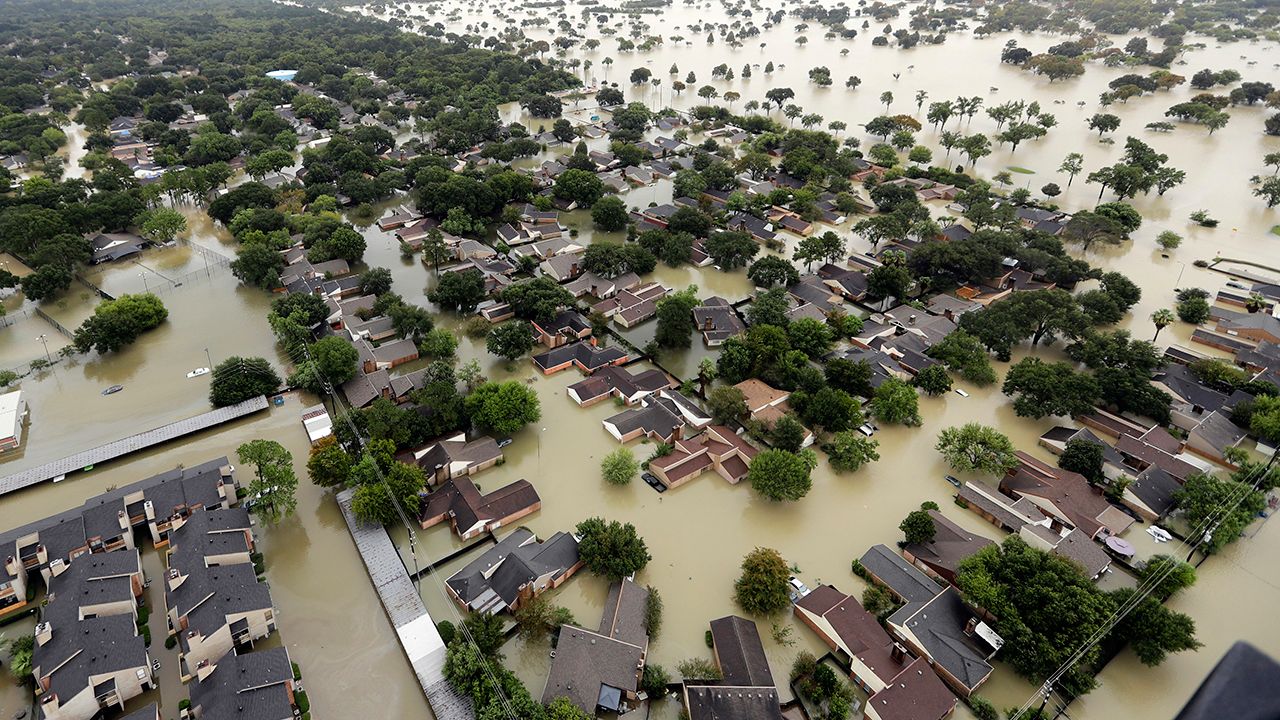
In this Aug. 29, 2017 photo, water from Addicks Reservoir flows into neighborhoods as floodwaters from Tropical Storm Harvey rise in Houston. (AP Photo/David J. Phillip)
What about the most rainy days per year? These are places that may not have the impressive rainfall totals that you see in the Deep South, but it rains lighter amounts more frequently.
Hilo, Hawaii, often sees over 250 days per year with measurable rainfall, which is almost three out of every four days. Southeast and southwest Alaska, including cities like Cold Bay, Yakutat, Juneau and Sitka, also often see over 200 rainy days per year.

A group of men walk in the rain along Hilo Bay in Hilo, Hawaii, as Tropical Storm Madeline drops rain on Hawaii’s Big Island, Wednesday, Aug. 31, 2016. (AP Photo/Audrey McAvoy)
If you want to stay in the Lower 48, the Pacific Northwest is known for its wet and gloomy weather.
Snowiest places to live
If you wanted to live somewhere with the most snowfall and didn’t care about the population as much, Alaska would have a plethora of options. Valdez, Alaska, is the snowiest city in the U.S., averaging over 300 inches of snowfall per year.

Mountains are reflected off Port Valdez in Valdez, Alaska, on Thursday, Feb. 27, 2014. (AP Photo/Mark Thiessen)
The nearby mountain passes in Alaska can average even more snowfall, with up to 500 to 600 inches per year.
What about in the Lower 48? The Great Lakes are home to the biggest snow producers thanks to lake-effect snow, but the snowiest cities vary every year, since it can become so localized.
New York State is home to cities like Buffalo, Rochester and Syracuse, all of which average around 100 inches or more of snow per year, but that’s no guarantee.
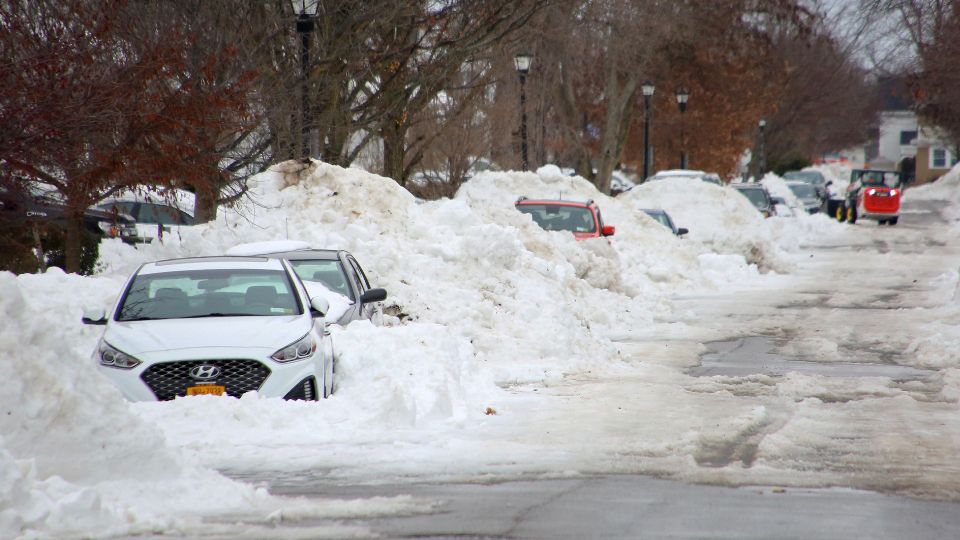
Snow piled up on the streets of Buffalo, N.Y. on Dec. 29, 2022. (AP Photo)
Last year during the 2022-23 winter, 133.6 inches of snow fell in Buffalo (5th snowiest on record), but only 50.4 inches fell in Rochester (8th least on record), even though they’re only about 75 miles apart.
Erie, Pa. is another city in the Northeast that averages over 100 inches of snowfall per year. Northern Michigan, especially the Upper Peninsula, is also home to areas that average close to 150 inches.
Our team of meteorologists dive deep into the science of weather and break down timely weather data and information. To view more weather and climate stories, check out our weather blogs section.

